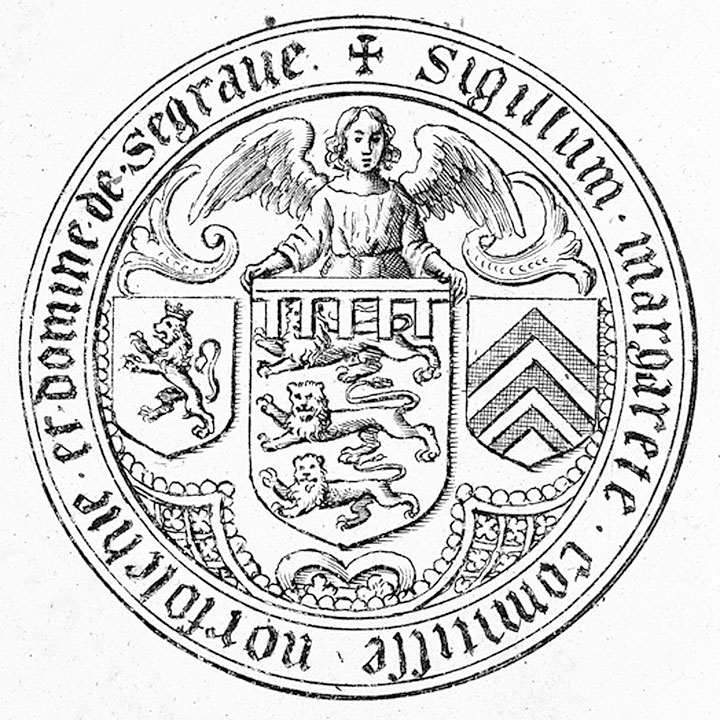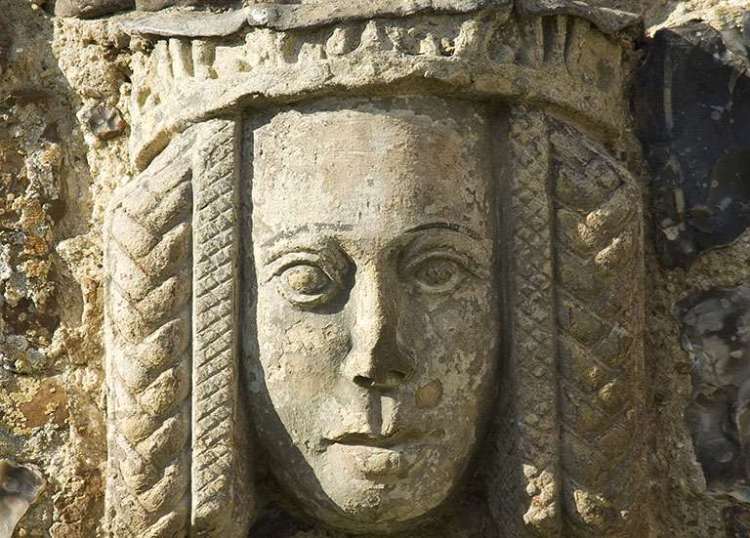The above illustrations show two royal widows. On the left Cecily Neville, Duchess of York, mother of both Edward IV and Richard III. On the right an imagined meeting between Edward IV and the widow he was to marry, Elizabeth Woodville.
In this modern age, when we are striving to live longer and longer, it’s hard to imagine what it could be like in the medieval period if someone, especially a widow, lived on into their eighties. Oh, yes, some did. We are always told that medieval widows had much more freedom than other women, but that is questionable. Merry widows? Not necessarily.
The following is based on Medieval Women by Henrietta Leyser.
In the twelfth century, Maud be Bohun was widowed at the age of ten. She married again, but through her long life (she was an octogenarian) she retained the dowry she had inherited as a child. This was to the considerable dismay and disadvantage of her first husband’s family, who had to wait for her eventual demise. The same can be said of Margaret of Brotherton of Framlingham, who survived two husbands, four children and died in the same year as her grandson (17-year-old John Hastings, 3rd Earl of Pembroke, who was killed in a jousting accident at court of Richard II at the end of December, 1389).


More about Margaret of Brotherton, see http://www.english-heritage.org.uk/learn/histories/women-in-history/womens/margaret-brotherton/
During the long lives of such widows, their families and in-laws could suffer great hardship because the widows held large parts of the inheritance. The two ladies above were from aristocratic backgrounds, but those in lesser circumstances could cause penury! Mind you, even rich widows could find themselves forced into remarriage. They had to do all they could to stay one step ahead of forceful, unwelcome suitors. (see https://wordpress.com/post/murreyandblue.wordpress.com/27858) Or, of course, they could deliberately seek another marriage because of the protection afforded by a man. It depended on the woman, and was all a case of swings and roundabouts.
But under the Anglo-Norman and Angevin kings, widows had no choice in the matter, because they were in the gift of the king. Yes, really. Would-be suitors paid handsomely into the royal coffers for this gift of marriage to a particular widow of their choice! It must have been like selecting from a menu. Eventually, the coronation charter of Henry I contained promises regarding widows’ rights of dower and that they would not be forced into marriage. Then Magna Carta further supported the rights of these women, who were not to pay for their dower or be compelled to remarry. Empty promises, it seems, because the practice continued to fill the treasury. Of course, it could work the other way too, and a widow could (if she had sufficient funds) pay the king not to give her away. In either case, the king profited.
Then came the growing practice of holding lands in jointure, which gave widows greater financial security. Unfortunately for them, this also made them more desirable as wives. According to the Merriam-Webster Unabridged dictionary, jointure is:
A – (1) : the joint tenancy of an estate; (2) : the estate so held
B – (1) : an estate settled on a wife to be taken by her in lieu of dower; (2) : a settlement upon the wife of a freehold estate (as in lands or tenements) for her lifetime at least to take effect upon the decease of the husband and to act as a bar to dower.
Yet another aspect of a widow’s trials came when they were urged in their late husband’s wills to “take the order of widowhood”. That is, not go into a convent, but to take a public vow of chastity. Failure to embark on such a course could result in the terms of the will severely reducing the widow’s income. The reason was not always male spite from beyond the grave, but could safeguard her and any children from a new husband who might not have their best interests at heart. Or whom she definitely did not want! Not so good if she wanted a physically loving relationship.
In the case of a third Margaret—Lady Margaret Beaufort—she was too powerful to be pushed around, and when it came to her final marriage, she took the public vow of chastity. A physical relationship cannot have appealed! She chose to marry Thomas Stanley, who presumably didn’t care if she was in his bed or not. A definite marriage of convenience and an alliance of great fortunes and power that was to cost Richard III his life when Margaret’s Tudor son usurped his throne. As you will see, Margaret and her boy were not high on the list of beautiful people. Sour pusses, both. Thomas Stanley, if this is a reasonable likeness, was better looking.
Margaret Beaufort, Henry VII and Thomas Stanley, who became 1st Earl of Derby
A medieval widow could therefore be caught in a vicious circle, and unable to rule her own life as she saw fit. That is something we just accept these days. Well, we do in the West, it is still very different in many other parts of the world.
So, as I said at the beginning, the freedom of medieval widows is debatable. Truly merry widows were probably rather thin on the ground.
Two more medieval widows, in the regulation black and white







